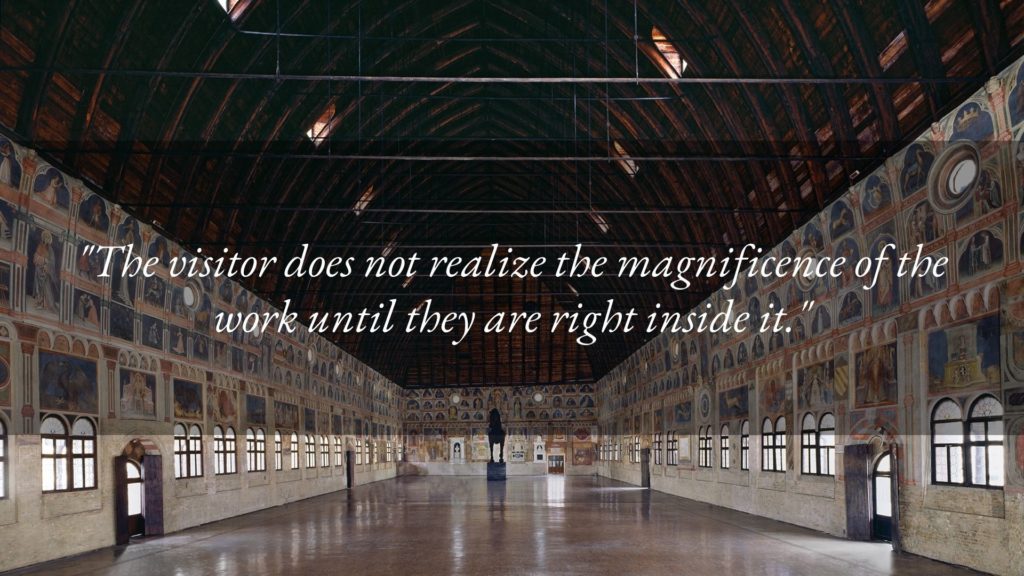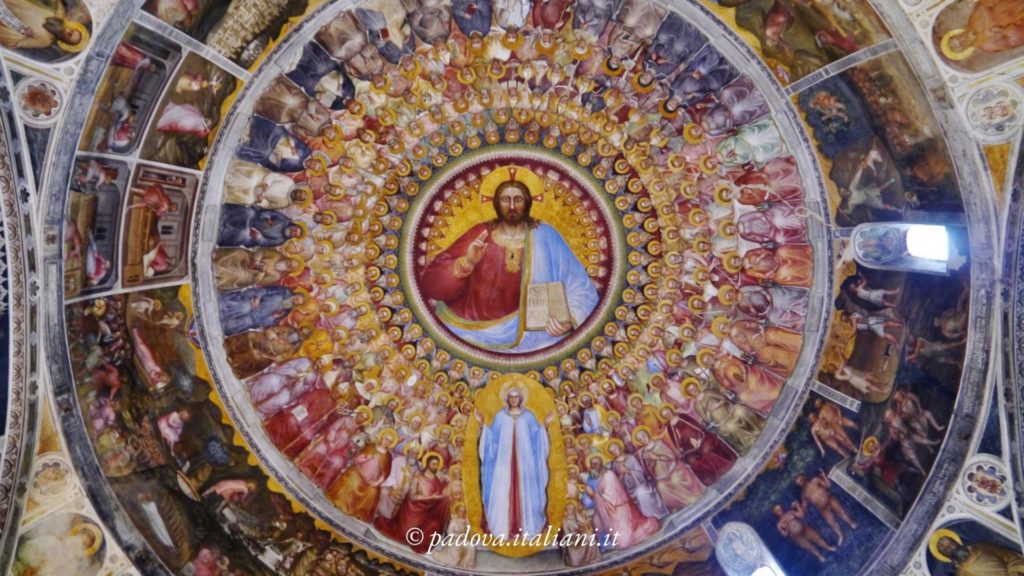
Padova Urbs Picta: Palazzo della Ragione and Battistero
With this article, we travel through time while remaining in Padua. The Palazzo della Ragione and the Baptistery of Padua are part of the cycle of Padua Urbs Picta frescoes, which have recently been added to the list of Unesco world heritage assets. The journey takes us back down the ages through “The frescoed cycles of the Fourteenth century.”
Previously, the Oratory of San Michele, one of the four stages of the cycle, was explored. We now shift our focus to the squares, and enter the Palazzo della Ragione and the Baptistery.
The Palazzo della Ragione: the richest stop
This is the largest cycle among those from Padua that are included in the World Heritage List. The walls of the hall on the first floor of the Palazzo were completely frescoed by Giotto , following the work done by the artist in the Scrovegni Chapel. The visitor does not realize the magnificence of the work until they are right inside it.

The fresco includes 343 frames that constitute what is defined as a real almanac of zodiac signs, symbols of professions, and human characters, designed according to the court benches of the time.
The Cathedral Baptistery: one discovery after another
In 1395, Giusto de ‘Menabuoi began to create what today has become a World Heritage Site: the History of Salvation cycle which narrates the life of Christ and of John the Baptist.
In addition to being important for the study of space in painting, this fresco has two notable distinguishing features. The first concerns the surface covered by the painting: every part of the Baptistery is frescoed, even the soffits of the arches. The second is the person who commissioned the work, in this case, a woman. The sensitivity of Fina Buzzacarini, who wanted these frescoes, has repercussions on the feelings rendered by their story.

The chapel of the Carrarese palace and its unique courteous elegance
Today the seat of the Galilean Academy of Sciences, Letters and Arts, the Reggia Carrarese includes the frescoed cycle that tells the Stories of the Old Testament,painted by Guariento di Arpo starting from 1354.
The message is explicit: the salvation of man comes from God thanks to the intervention of Christ. An important and complex theme which is vivaciously narrated through the dimension of time is that of the court, whose story is told in the choice to paint the clothes and architecture of that time.
Having reached the end of the second stop, all that remains is to visit these Italian works of art that are the envy of the whole world. An experience that the guests of the Hotel Tritone can enjoy by travelling a short distance from the city of Abano Terme.
To contemplate the wonder of these frescoes, you can book your next trip to Padua and your stay at Hotel Tritone, by writing here or calling (+39) 049 8668099.
